|
|
|
Shrines of England
|
Before the reformation, there were many shrines across England,
some with a small relic of a saint, some with items associated with a
saint, and some with the complete body. Of course, not all were genuine,
but were worshipped anyway, so did the provenance really matter? I'll
discuss that later.
Then in the 1530's along came Henry VIII
and the Reformation, and shrines were destroyed: partly because of the
change in religious belief with the dawn of protestantism, but mostly
because Henry wanted to get his hands on the treasures possessed by the
shrines.
So, did they all go? No, some remain, and we'll look at
those. What is most interesting is that a number of shrines have been
recreated in recent years - by the Anglican church! Some say it is just
a ploy to attract tourist to cathedrals and other sacred places - but is
this true?
First then, the shrine that even Henry wasn't
brave enough to destroy: Britainís
most imposing surviving shrine, that of Edward the Confessor in
Westminster Abbey. |

Burial of Edward the confessor: Bayeux
Tapestry. |
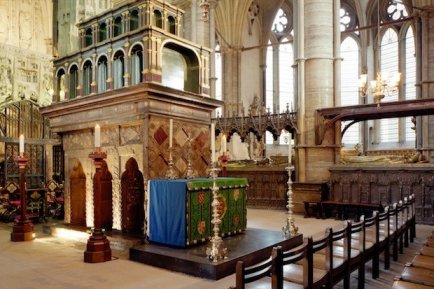 |
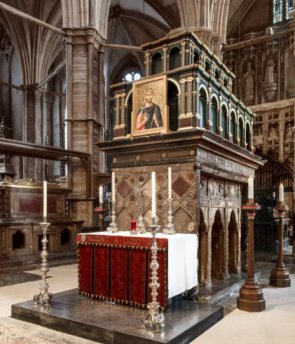 |
|
The shrine today
|
|
Edward died on the 4th
of January 1066, and was buried with great honour in the then Norman
abbey, as depicted on the Bayeux Tapestry. Edward was canonised in 1161.
The abbey was rebuilt
in Gothic style by Henry III, and a splendid new shrine was completed in
1269; it is said that Henry III presented the relic of a stone said to
bear the marks of Christ's feet, from his Ascension, and a relic of the
girdle of the Virgin, to the shrine.
Even, it seems, Henry
VIII was moderately respectful and the bones of Edward survived the
reformation, though the shrine was despoiled and the jewels made away
with. Queen Mary insisted that the shrine be put back together,
repaired, and new jewels added, and all was back in place by 1557,
though the jewels are no longer there.
St Albans
|
|

|
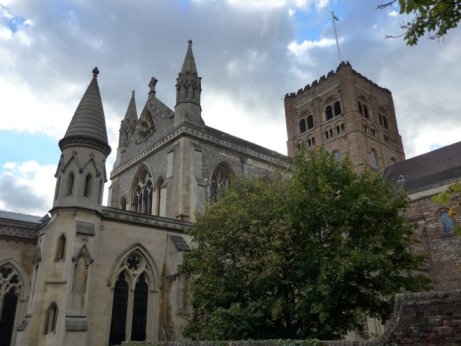 |
|
|
|
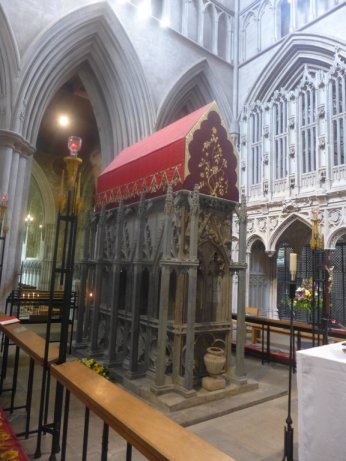 |
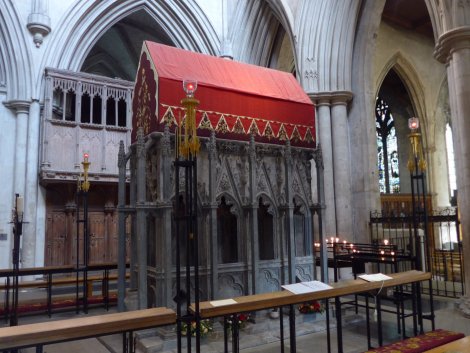 |
|
The
Cathedral of St Albans. It is said that there was a shrine to St Alban
founded here in the fifth century. According to Matthew Paris, it was
destroyed by the Saxons in 593. Building of the present building started
in the 11th century as a
Norman Abbey, and the crossing tower, built of Roman bricks, remains.
A major visitor
attraction is the shrine of St Alban, restored in 1993. In 2002 a church
in Cologne donated a precious relic: a shoulder bone, said to have been
St Albanís. He was home at last.
Apparently, when
Cardinal Vincent Nicholls, Catholic Archbishop of Westminster heard
about the restoration, he said ĎAt last the reformation is over!í We
mentioned this to a member of the clergy at St Albans Ė it did not go
down well.
|
|
On to page two
Home
page - explore the site |






